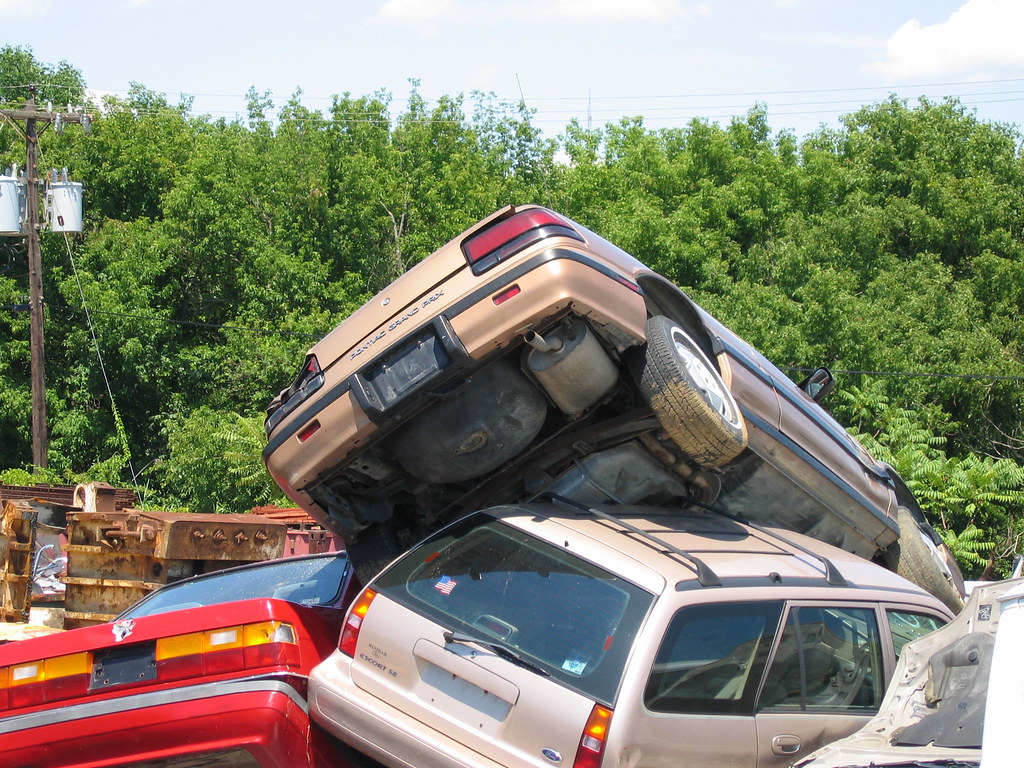How Circular Economy Principles Are Being Applied to Car Wrecking

Freya Parker . Follow
2 months ago

In recent years, the concept of the circular economy has gained significant attention as industries worldwide strive to create more sustainable and eco-friendly practices. Unlike the traditional linear economy, which follows the "take, make, dispose" model, the circular economy focuses on reusing, recycling, and extending the life of products to reduce waste. One sector where these principles are being successfully applied is the car wrecking industry. Car wrecking, traditionally viewed as a disposal process, is now transforming into an essential part of the circular economy. By reusing parts, recycling materials, and minimizing environmental impact, the industry is aligning itself with sustainable practices. This blog post will explore how circular economy principles are being integrated into car wrecking operations and their significance for the future of automotive recycling.
The Shift from Disposal to Reuse
In the past, car wrecking primarily focused on disposing of end-of-life vehicles. Old cars were dismantled, and whatever parts could not be resold were often sent to landfills. However, with the rising awareness of environmental issues and resource depletion, the industry has shifted towards reusing as many components as possible. Circular economy principles encourage the reuse of valuable car parts, such as engines, transmissions, and electronics, instead of discarding them.
This shift has not only benefited the environment by reducing waste but has also created a profitable market for used car parts. Many car wreckers now sell high-quality second-hand parts to mechanics, repair shops, and individual customers. By reusing these parts, the industry contributes to a reduction in the demand for new manufacturing, lowering the energy and resources needed to produce new components. This practice aligns with the circular economy's emphasis on keeping products and materials in use for as long as possible.
Recycling Materials for a Sustainable Future
Recycling is a central element of the circular economy, and car wrecking plays a critical role in recycling automotive materials. Modern vehicles are made from a combination of metals, plastics, glass, and rubber. Rather than allowing these materials to end up in landfills, car wreckers now focus on recycling them for further use. For example, steel and aluminum from car frames can be melted down and reused in manufacturing. Recycling metals from old cars helps reduce the need for mining, conserves natural resources, and decreases greenhouse gas emissions associated with metal production.
Plastic components, which are prevalent in modern vehicles, can also be recycled into new products. The challenge with plastic recycling lies in the variety of plastic types used in vehicles, but technological advancements are improving the efficiency of separating and recycling these materials. Services like cash for cars Brisbane play a crucial role in this process by encouraging the recycling of old vehicles, helping reduce the environmental impact of plastic waste, and promoting the circular economy’s goal of minimizing waste through resource recovery.
Reducing Environmental Impact through Efficient Dismantling
The dismantling process in car wrecking is more than just taking vehicles apart. In line with circular economy principles, it involves careful planning to extract the maximum value from each car while minimizing environmental harm. Efficient dismantling includes draining hazardous fluids, such as oil, coolant, and brake fluids, and disposing of them in an eco-friendly manner. These fluids, if not handled correctly, can contaminate soil and water, leading to severe environmental consequences.
By safely removing and recycling or disposing of hazardous materials, car wreckers are reducing the risk of environmental contamination. Additionally, components like batteries, air conditioning units, and catalytic converters are carefully removed to prevent hazardous substances from being released into the environment. The careful dismantling process ensures that each vehicle is handled responsibly, and as many parts as possible are reused or recycled, further supporting the principles of the circular economy.
Promoting the Longevity of Automotive Components
One of the key tenets of the circular economy is extending the lifespan of products. In the car wrecking industry, this concept is applied by promoting the repair and refurbishment of automotive components. Many parts from end-of-life vehicles are still in excellent condition and can be refurbished for resale. For instance, engines, transmissions, and even electronic systems can be reconditioned and sold as high-quality, affordable alternatives to new parts.
Refurbishing parts reduces the need for new manufacturing, which, in turn, decreases energy consumption and the use of raw materials. By promoting the longevity of automotive components, the car wrecking industry contributes to a more sustainable economy where products are kept in use for as long as possible, reducing overall waste and environmental impact.
Supporting the Circular Economy through Collaboration
The success of the circular economy in car wrecking depends on collaboration between various stakeholders, including manufacturers, recyclers, and consumers. Manufacturers can play a significant role by designing vehicles with recycling in mind, using materials that are easier to dismantle and recycle. Car wreckers, on the other hand, are responsible for ensuring that vehicles are dismantled and processed efficiently to maximize the reuse of parts and recycling of materials.
Consumers also have an important role to play in supporting the circular economy by choosing to purchase second-hand or refurbished parts and properly disposing of their end-of-life vehicles through responsible car wrecking services. Together, these stakeholders create a system where materials are continuously reused, reducing the need for new resources and minimizing waste.
The Economic Benefits of a Circular Approach
In addition to the environmental advantages, adopting circular economy principles in car wrecking offers economic benefits. The demand for used and refurbished car parts has created a thriving market that generates revenue for car wreckers and provides affordable alternatives for consumers. Additionally, by recycling materials like steel, aluminum, and plastics, car wreckers can contribute to the supply chain, reducing the costs associated with raw material extraction and production.
The circular approach also opens up opportunities for innovation and job creation in the recycling and refurbishment sectors. As the demand for sustainable practices grows, car wrecking businesses that embrace circular economy principles are likely to benefit from increased customer loyalty and regulatory support, further driving the growth of this industry.
Conclusion
The car wrecking industry is undergoing a significant transformation as it embraces circular economy principles. By shifting the focus from disposal to reuse, recycling materials, and promoting the longevity of automotive components, car wreckers are contributing to a more sustainable and eco-friendly future. The collaboration between manufacturers, recyclers, and consumers is crucial in supporting this transition and ensuring that vehicles are dismantled responsibly. The economic and environmental benefits of this shift are evident, as the industry reduces waste, conserves resources, and creates new opportunities for growth. As the circular economy continues to gain momentum, the role of car wrecking will become increasingly important in building a more sustainable automotive ecosystem.
Explore additional informative content here.


